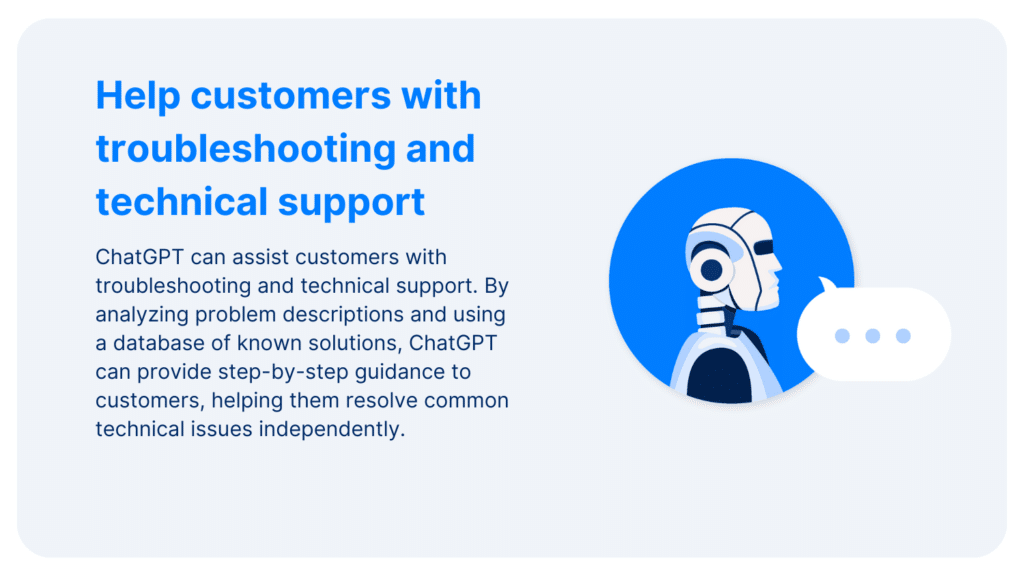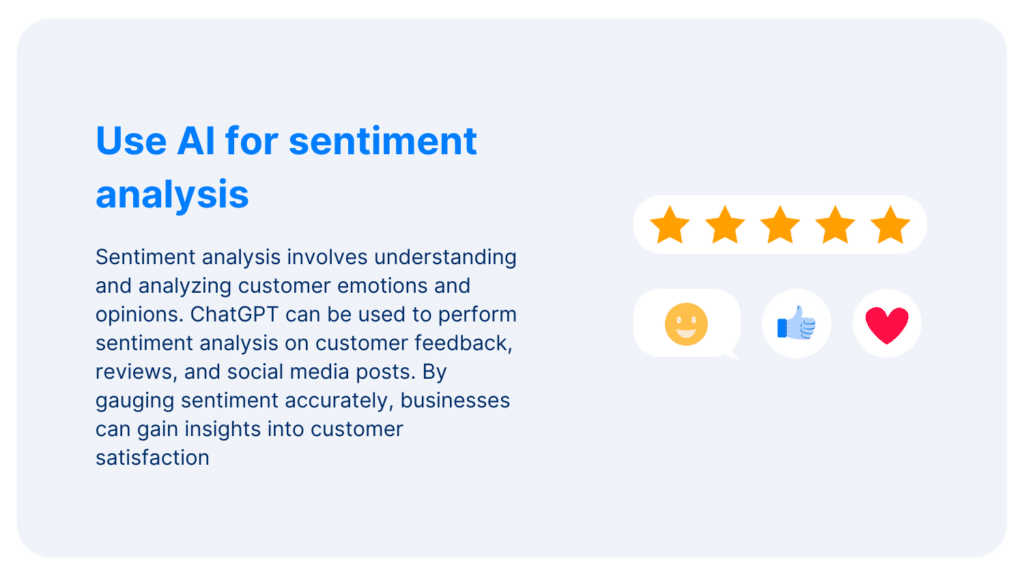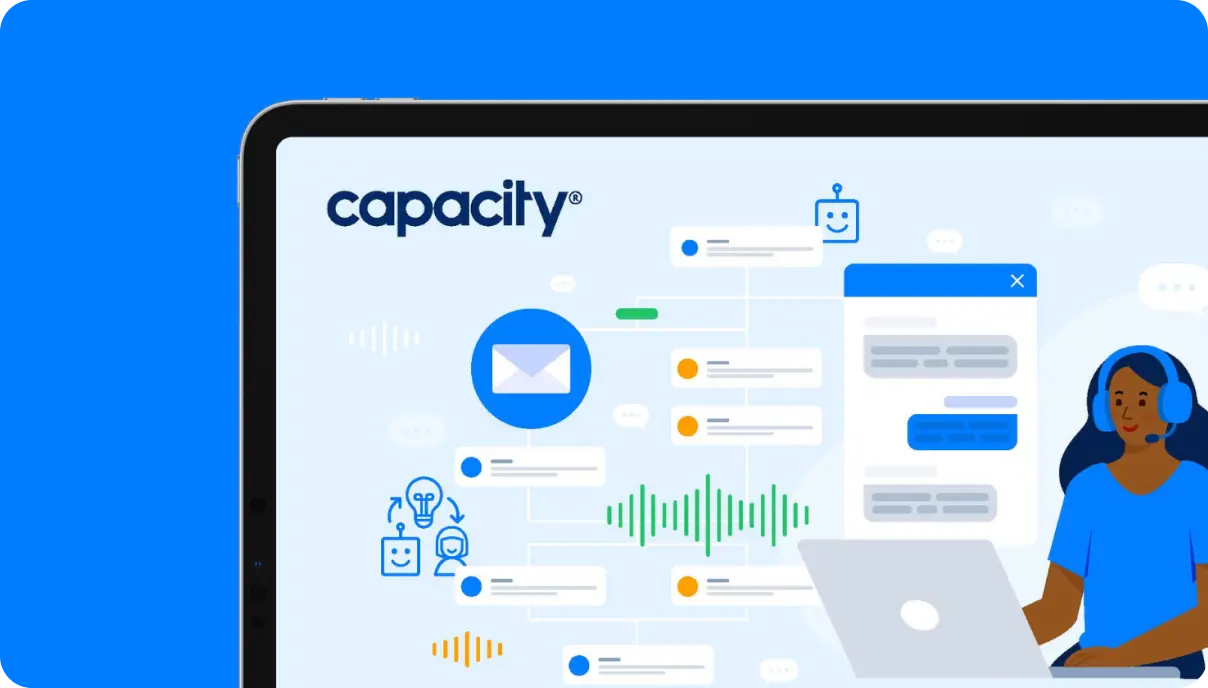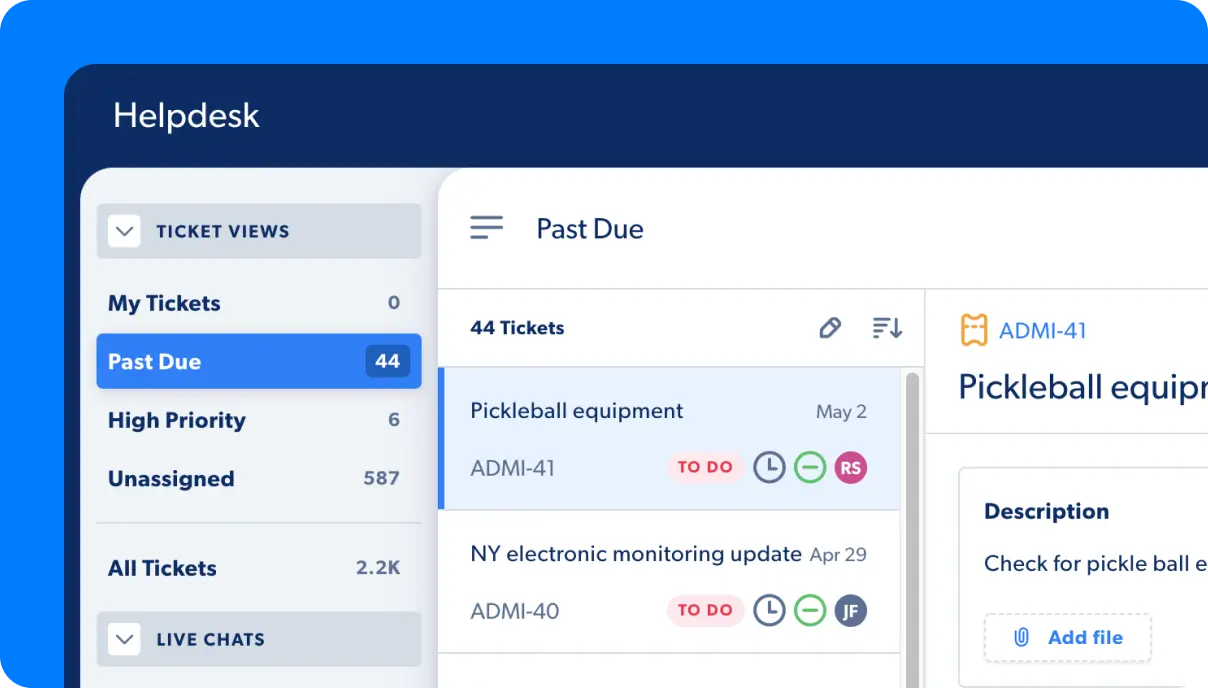Customer support automation has been significantly enhanced by Artificial Intelligence (AI) tools like ChatGPT. Developed by OpenAI, ChatGPT is a conversational AI model capable of understanding and generating human-like responses. By integrating ChatGPT into customer support systems, businesses can automate basic inquiries, offer personalized product recommendations, automate order tracking, resolve technical issues, handle complaints, and provide multilingual support. Plus, ChatGPT also enables hands-free support through voice assistants, instant responses on social media, sentiment analysis, digital customer assistance, and proactive customer engagement.
This AI-powered automation improves efficiency, enhances customer satisfaction, and strengthens brand reputation. So, let’s break down the meat and potatoes of chatGPT for customer support automation and the 12 ways your company can take advantage of this new technology.
Understanding AI and ChatGPT for customer support automation

Artificial Intelligence (AI) has revolutionized various industries, and customer support is no exception. Let’s dig into how it works. Basically, AI-powered customer support automation uses advanced algorithms and machine learning techniques to enhance the efficiency and effectiveness of customer service interactions. ChatGPT, developed by OpenAI, is a prime example of how AI can be used for customer support automation.
ChatGPT is a state-of-the-art conversational AI model that can understand and generate human-like responses. It uses natural language processing and deep learning techniques to analyze customer queries, interpret context, and provide intelligent and contextually relevant answers. Because of this capability, businesses can automate customer support processes, reducing the burden on human agents and improving response times.
By using ChatGPT for customer support automation, businesses can benefit from its ability to handle basic inquiries, provide personalized recommendations, troubleshoot technical issues, and resolve customer complaints. ChatGPT can be trained on vast amounts of data, including customer interactions and historical support logs, to continuously improve its performance and accuracy. This results in a seamless and efficient customer support experience, increasing customer satisfaction and loyalty.
Overall, understanding the capabilities of AI and using tools like ChatGPT can revolutionize customer support automation. So, by harnessing the power of AI, businesses can streamline their support processes, deliver personalized experiences, and optimize customer satisfaction. As technology advances, AI-powered customer support automation will play a crucial role in shaping the future of customer service.
12 ways to use AI like ChatGPT for customer support automation

1. Add ChatGPT for basic customer inquiries and FAQs
Firstly, by integrating ChatGPT into your customer support system, you can automate the handling of basic inquiries and frequently asked questions (FAQs). Some 68% of customer service agents say they feel overwhelmed with the amount of work they have to do manually. Additionally, 94% of workers say they perform repetitive, time-consuming tasks in their role, according to Zapier. So, with the help of AI, ChatGPT can be trained on your company’s knowledge base, enabling it to provide instant responses to common customer queries. This frees up your support team’s time and allows them to focus on more complex customer issues, improving overall efficiency and response time.
2. Use AI for personalized product recommendations
Using AI algorithms powered by ChatGPT, you can offer personalized product recommendations to customers. By analyzing browsing behavior, purchase history, and preferences, ChatGPT can generate tailored suggestions that align with each customer’s individual needs and preferences. This personalized approach enhances the customer experience, increases engagement, and improves the chances of upselling and cross-selling.
3. Automate your order tracking and status updates
ChatGPT can be integrated with your order management system to automate order tracking and status updates. Customers can receive real-time information about their orders, such as shipping updates and estimated delivery dates, by simply interacting with ChatGPT. In a word, this automation eliminates the need for manual intervention and provides customers with a seamless post-purchase experience.
4. Help customers with troubleshooting and technical support

ChatGPT can assist customers with troubleshooting and technical support. By analyzing problem descriptions and using a database of known solutions, ChatGPT can provide step-by-step guidance to customers, helping them resolve common technical issues independently. This reduces the need for customers to wait for support agents and empowers them to find solutions faster.
5. Handle customer complaints and resolve issues
Customer complaints and issues can be efficiently managed using ChatGPT. By understanding the context and sentiment of customer messages, ChatGPT can address complaints by providing immediate assistance or escalating the issue to the appropriate department or support agent. This proactive approach ensures prompt resolution, enhances customer satisfaction and improves brand reputation.
6. Automate your appointment scheduling and reminders
Integrating ChatGPT into your scheduling system allows for the automation of appointment scheduling and reminders. Customers can interact with ChatGPT to book appointments, reschedule, or cancel them. ChatGPT can also send automated reminders to customers, reducing the likelihood of missed appointments and improving the overall customer experience.
7. Use ChatGPT for multilingual support
With its language capabilities, ChatGPT can provide multilingual support, enabling effective communication with customers from different language backgrounds. By integrating ChatGPT with multilingual databases and translation services, you can ensure that customers feel valued and understood, regardless of their native language.
8. Add AI to your voice assistants for hands-free support
Integrating ChatGPT with voice assistants allows for hands-free customer support. Customers can interact with voice assistants to seek assistance, ask questions, or receive information without the need for typing or navigating through interfaces. This voice-based support enhances convenience and accessibility for customers, particularly in scenarios where hands may be occupied or accessibility is limited.
9. Provide instant responses on social media
Social media platforms are popular channels for customer inquiries and feedback. By integrating ChatGPT with your social media accounts, you can automatically respond instantly to customer inquiries and comments. ChatGPT can analyze and understand messages’ intent, ensuring that customers receive timely assistance and maintaining a positive brand image in the social media sphere.
10. Use AI for sentiment analysis

Sentiment analysis involves understanding and analyzing customer emotions and opinions. ChatGPT can be used to perform sentiment analysis on customer feedback, reviews, and social media posts. By gauging sentiment accurately, businesses can gain insights into customer satisfaction, identify areas for improvement, and tailor their customer support strategies accordingly.
11. Implement AI for digital customer assistance
ChatGPT can act as a digital customer assistant, providing support throughout the customer journey. From pre-sales queries to guiding customers through complex processes, ChatGPT can offer on-demand assistance, 24/7 availability, and consistent support across various digital touchpoints. This digital customer assistance enhances the overall customer experience and boosts customer satisfaction.
12. Use AI for proactive customer engagement
AI-powered ChatGPT can enable proactive customer engagement. By analyzing customer behavior, preferences, and purchase history, ChatGPT can send targeted messages, personalized offers, and relevant product recommendations. This proactive engagement fosters customer loyalty, increases cross-selling opportunities, and drives customer engagement with your brand.

Automate Your Work
Capacity’s enterprise AI chatbot can help:
- Answer FAQs anytime, anywhere
- Find relevant documents within seconds
- Give surveys and collect feedback














































